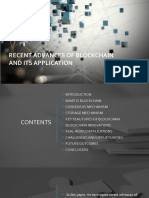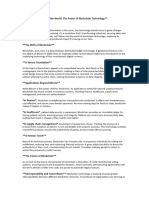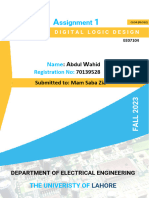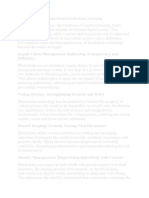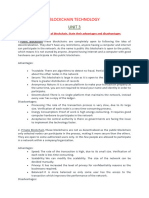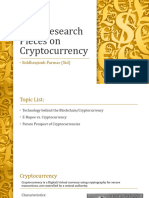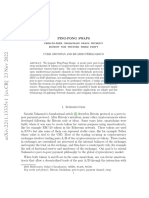0% found this document useful (0 votes)
8 views4 pagesDuh 4
The essay discusses blockchain technology as a decentralized ledger that extends beyond cryptocurrencies, impacting various sectors such as supply chains, digital identity, smart contracts, governance, and intellectual property. It highlights the technology's advantages, including transparency and security, while also addressing limitations like scalability, regulatory challenges, and ethical concerns regarding data control and decentralization. The future of blockchain, envisioned as part of a decentralized Web3, presents both opportunities and significant challenges that will shape its adoption and impact in the coming years.
Uploaded by
Navid NasirzadehCopyright
© © All Rights Reserved
We take content rights seriously. If you suspect this is your content, claim it here.
Available Formats
Download as DOCX, PDF, TXT or read online on Scribd
0% found this document useful (0 votes)
8 views4 pagesDuh 4
The essay discusses blockchain technology as a decentralized ledger that extends beyond cryptocurrencies, impacting various sectors such as supply chains, digital identity, smart contracts, governance, and intellectual property. It highlights the technology's advantages, including transparency and security, while also addressing limitations like scalability, regulatory challenges, and ethical concerns regarding data control and decentralization. The future of blockchain, envisioned as part of a decentralized Web3, presents both opportunities and significant challenges that will shape its adoption and impact in the coming years.
Uploaded by
Navid NasirzadehCopyright
© © All Rights Reserved
We take content rights seriously. If you suspect this is your content, claim it here.
Available Formats
Download as DOCX, PDF, TXT or read online on Scribd
/ 4















